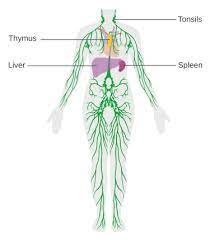WHAT IS MURPHY’S SIGN:
Murphy’s sign is a physical examination technique used to evaluate the presence of gallbladder inflammation, which is commonly caused by gallstones or infection. The maneuver involves applying gentle pressure beneath the right costal margin, below the liver’s lower border, while the patient inhales deeply. A positive Murphy’s sign is observed when the patient abruptly halts inspiration due to the pain induced by the pressure on the inflamed gallbladder.
SIGNIFICANCE IN DIAGNOSING GALLBLADDER DISEASE:
The presence of Murphy’s sign suggests a high likelihood of acute cholecystitis, an inflammatory condition of the gallbladder. Acute cholecystitis typically occurs due to the obstruction of the cystic duct by gallstones. The abrupt cessation of inspiration during the examination is a reflexive response to avoid further stretching or movement of the inflamed gallbladder against the examiner’s pressure, indicating localized tenderness and inflammation.
CLINICAL EVALUATION:
When performing the physical examination, the healthcare provider places their fingers just below the costal margin, on the right upper quadrant of the abdomen. Firm but gentle pressure is applied while instructing the patient to take a deep breath. If the patient stops breathing suddenly and experiences severe pain upon inspiration, it indicates a positive Murphy’s sign. The maneuver should be performed cautiously to avoid aggravating the patient’s pain.
CONDITIONS ASSOCIATED WITH MURPHY’S SIGN:
- Acute Cholecystitis: The most common condition associated with Murphy’s sign, acute cholecystitis occurs when the gallbladder becomes inflamed and infected due to gallstone obstruction.
- Chronic Cholecystitis: Prolonged or recurrent episodes of gallbladder inflammation may lead to chronic cholecystitis, characterized by a thickened gallbladder wall and fibrosis.
- Choledocholithiasis: The presence of gallstones in the common bile duct can cause pain and inflammation, leading to positive Murphy’s sign.
- Ascending Cholangitis: This serious infection occurs when bacteria ascend from the bile ducts into the liver, often caused by an obstruction such as a gallstone, and can be associated with positive Murphy’s sign.
- Gallbladder Empyema: In rare cases, acute cholecystitis can progress to gallbladder empyema, characterized by the accumulation of pus within the gallbladder. Murphy’s sign may be present in such cases.
CONCLUSION:
Murphy’s sign is a valuable clinical maneuver used to assess gallbladder inflammation, specifically acute cholecystitis. The abrupt cessation of inspiration in response to pressure beneath the right costal margin is a characteristic finding in patients with gallbladder pathology. Healthcare professionals should perform this examination with caution and consider further diagnostic tests to confirm the underlying condition. Recognizing Murphy’s sign aids in the prompt diagnosis and appropriate management of gallbladder diseases, ensuring timely intervention and reducing potential complications.





